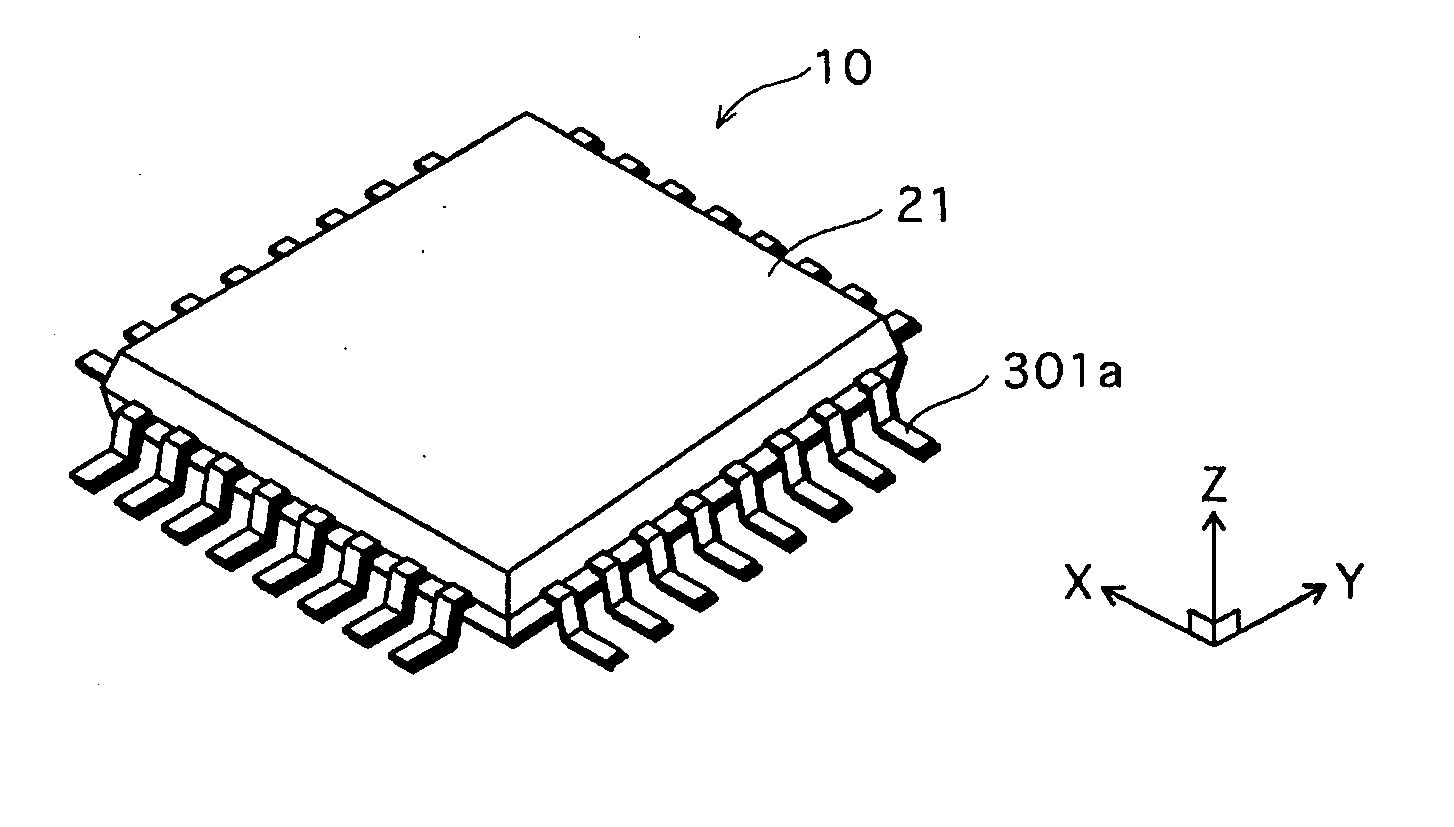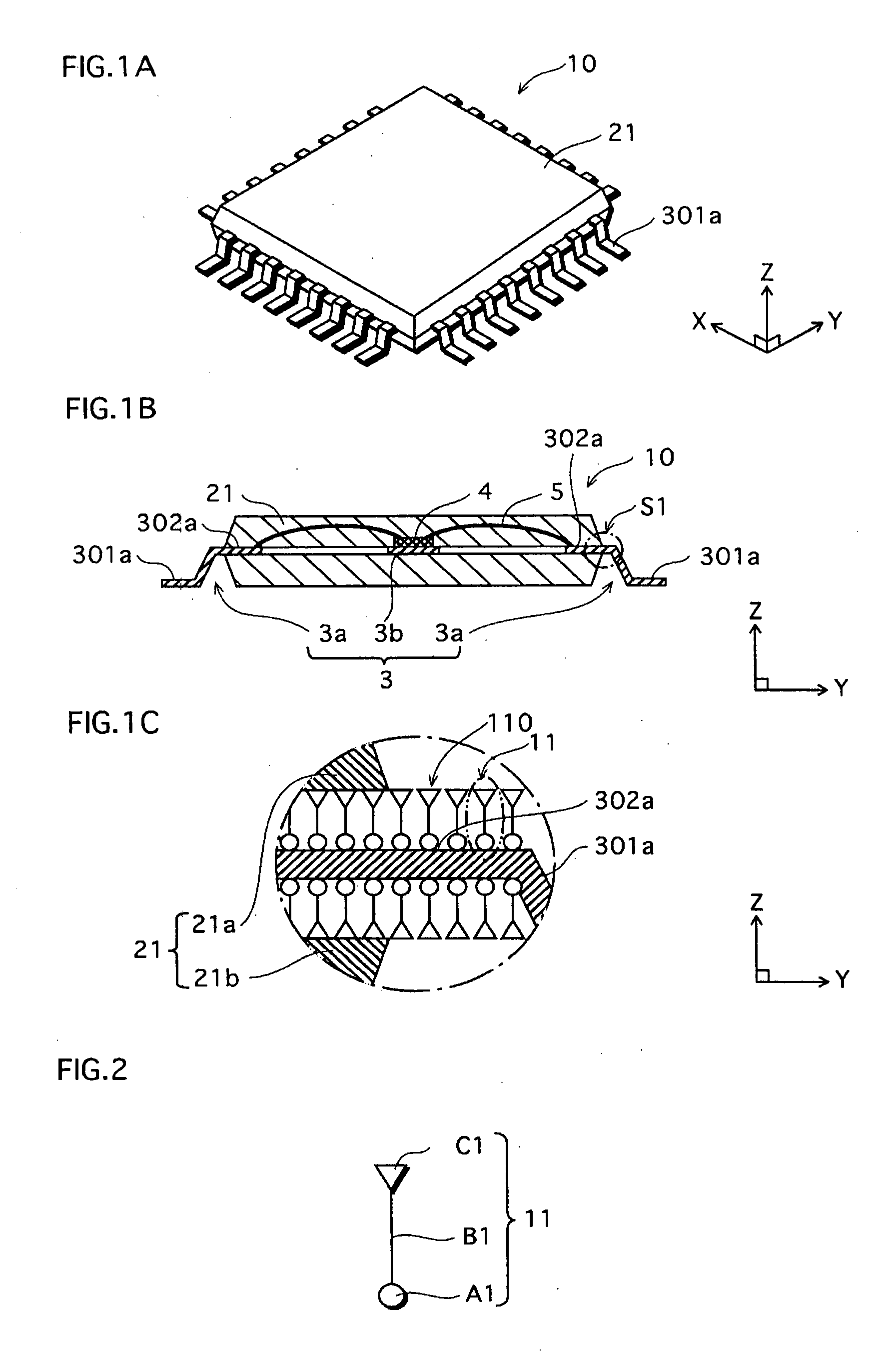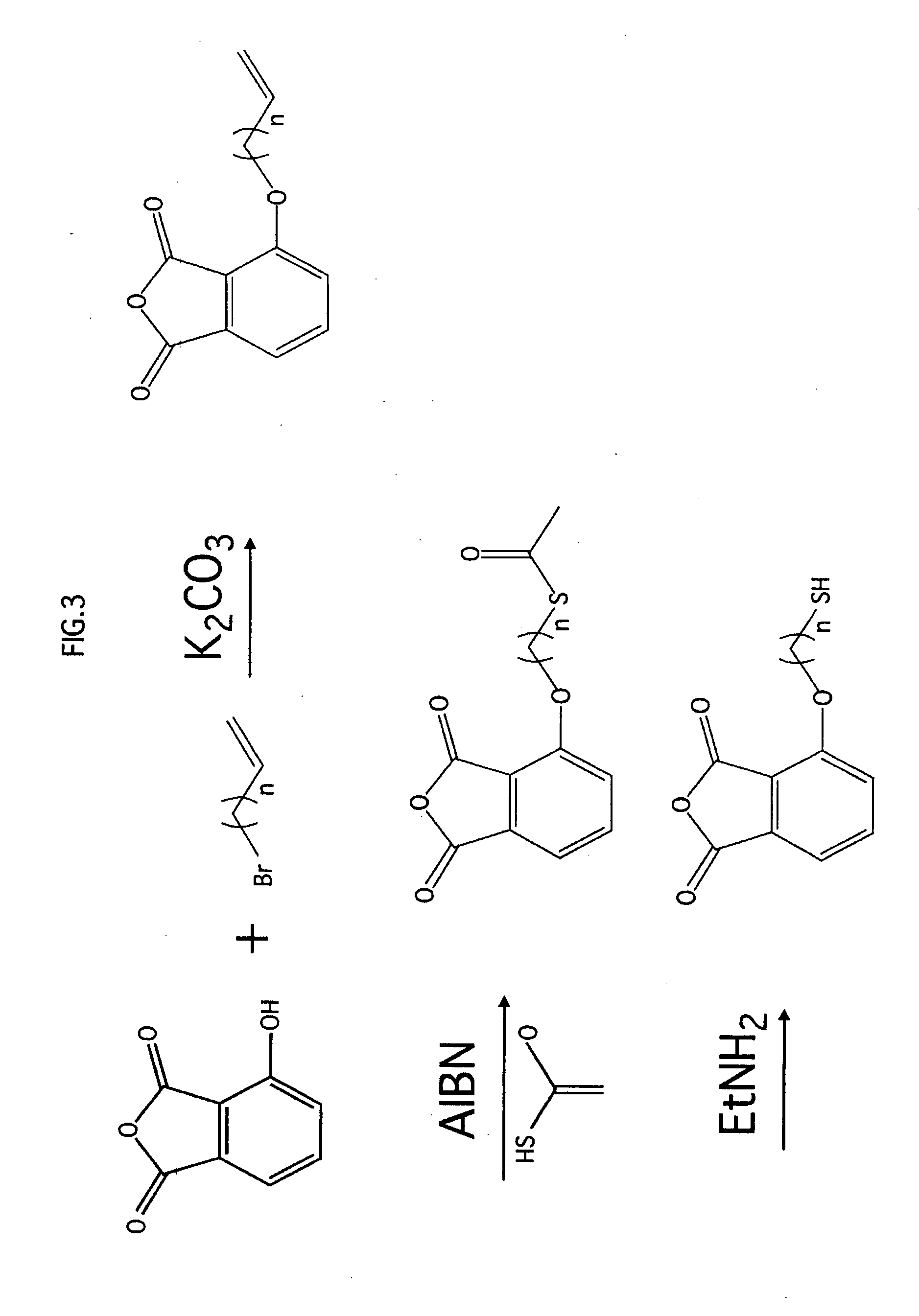Wiring member, resin-coated metal part and resin-sealed semiconductor device, and manufacturing method for the resin-coated metal part and the resin-sealed semiconductor device
- Summary
- Abstract
- Description
- Claims
- Application Information
AI Technical Summary
Benefits of technology
Problems solved by technology
Method used
Image
Examples
embodiment 1
[0091] 1. Semiconductor Device Structure
[0092]FIG. 1A is an external perspective view showing a structure of a semiconductor device (QFP 10, Quad Flat Package), which is an exemplary application of the present invention. FIG. 1B is a y-z cross-sectional view of the QFP 10. FIG. 1C is an enlarged view of portion S1 in FIG. 1B.
[0093] The QFP 10 is a surface-mounted semiconductor device used in an IC, LSI etc., and is composed of a semiconductor chip 4, a wiring lead 3, wires 5, a molded resin 21, and the like.
[0094] The wiring lead 3 is constituted from a metallic material that has superior electrical conductivity (e.g., copper alloy), and has a structure that also includes die pads 3a and 3b that have been punched out of a metal plate.
[0095] As shown in FIG. 1A, the QFP 10 has a structure that includes the molded resin 21 formed in a board shape and having a predetermined thickness and square main surface, and outer leads 301a that are a part of the die pads 3a and extend out fro...
embodiment 2
[0157] The organic coating 110 composed of the functional organic molecules 11 pertaining to the present invention has various effects when applied to a semiconductor device as mentioned above, but this is nothing more than one example.
[0158] The existence of a semiconductor chip is not required. For example, the organic coating 110 can be applied to an LED device that includes a light emitting diode (LED) element instead of a semiconductor chip.
[0159]FIG. 7 is a schematic cross-sectional view showing a structure of a wiring lead 30 and a reflector 22 of an LED device unit 31x of embodiment 2 of the present invention.
[0160] In a cross-sectional structure of the LED device unit 31x, the wiring lead 30 has been provided on a bottom portion of the mortar-shaped reflector 22. The reflector 22 is formed by a resin mold using a thermoset resin material (e.g., epoxy resin).
[0161] Similarly to embodiment 1, there is the possibility of resin burrs forming in the LED device unit 31x as we...
embodiment 3
[0167] The following is a description of embodiment 3 of the present invention focusing on differences from embodiment 2.
[0168] LED Device Structure
[0169]FIGS. 8A to 8C are cross-sectional views showing a structure of and manufacturing steps for an LED device 31 pertaining to embodiment 3 of the present invention.
[0170] The LED device 31 basically includes the device unit 31x of embodiment 2, and as shown in FIG. 8B, further includes an LED chip 42 that has been bonded, via a paste 42a, on the wiring lead 30 surrounded by the reflector 22. The LED chip 42 is connected to the wiring lead 30 via the wire 52.
[0171] A transparent sealing resin 82 is filled into the reflector 22 on a reflector surface 201 and the exposed areas 301 and 3102 so as to seal the LED chip 42 and the like.
[0172] Silicone resin, which is one example of a thermoset resin, is used as the sealing resin 82.
[0173] In embodiment 3, an organic coating 120, which is composed of a single-molecule film formed by the...
PUM
| Property | Measurement | Unit |
|---|---|---|
| Metallic bond | aaaaa | aaaaa |
| Hardening | aaaaa | aaaaa |
| Surface area | aaaaa | aaaaa |
Abstract
Description
Claims
Application Information
 Login to view more
Login to view more - R&D Engineer
- R&D Manager
- IP Professional
- Industry Leading Data Capabilities
- Powerful AI technology
- Patent DNA Extraction
Browse by: Latest US Patents, China's latest patents, Technical Efficacy Thesaurus, Application Domain, Technology Topic.
© 2024 PatSnap. All rights reserved.Legal|Privacy policy|Modern Slavery Act Transparency Statement|Sitemap



